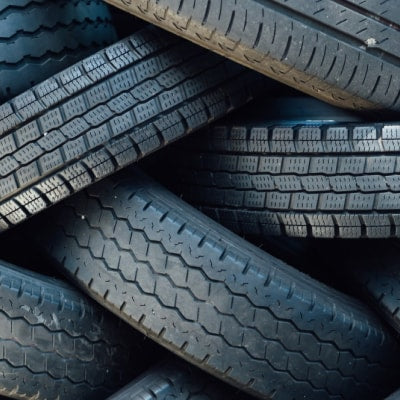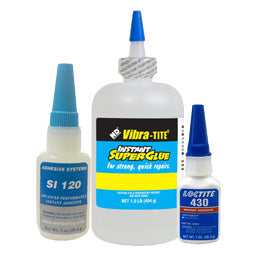Glues for Natural Rubber
Natural rubber is a type of material made from the latex polymers of trees and plants, including commonly the hevea brasiliensis tree that is sometimes referred to as the "rubber tree." These natural materials are combined with chemical additives and treated with heat to produce the final material.
Natural rubber is popular because of its elasticity, flexibility, elongation, and high tensile strength. A durable material, it has a long fatigue life, good vibration dampening properties, and great abrasion resistance. It also has great electrical properties and can withstand lower temperatures to add to its diverse number of applications.
Some common applications for natural rubber include:
-
Dog toys
-
Hoses
-
Tires
-
Flooring
-
Shoes
-
Bearings
While natural rubber has a high resistance to dilute acids and alkali, it has a much lower resistance to UV light, water, heat, ozone, gasoline, grease, and several oils. Since prolonged exposure to these chemicals can lead to degradation, scientists began to develop different types of synthetic rubbers that had better resistance to these elements.
Bonding Natural Rubber with Adhesives
Rubber can already pose some challenges when it comes to bonding, but natural rubber is one of the more difficult types of rubber to bond. One of the biggest reasons is natural rubber's surface energy. Because natural rubber has a lower surface energy, adhesives have a harder time wetting and adhering to the surface.
Consequently, a specialist adhesive for natural rubber that is designed to bond a lower energy substrate may be needed. Proper surface preparation is also typically recommended to raise the material's surface energy and ensure a good bond.
Adhesives for Natural Rubber to Try
Because gluing natural rubber can be so challenging, finding the right product is necessary. Below, our team highlights some potential glues for natural rubber that you can test to see if they work for your application.
-
![Infinity Bond CA-RT Rubber Toughened 1 oz]()
Infinity Bond Rubber Toughened Cyanoacrylate
One of the best natural rubber glues, this cyanoacrylate has a toughened formula that can increase impact resistance and strength. It comes in a clear color as well as different viscosities to fit the specs for a variety of applications.
-
![ASI SI Series Surface Insensitive Cyanoacrylate Super Glue]()
ASI SI Series Cyanoacrylate
A popular choice, this series is often a go-to product for various substrates. It includes a viscosity range from 5 cps to a gel. This series also meets most military (MilSpec) standards.
While these products have worked for applications involving natural rubber in the past, every application is different. If you need more assistance in finding a product, you can get a personalized product recommendation from someone on our team.
Types of Glue for Natural Rubber
The most commonly used natural rubber glues are cyanoacrylate adhesive glues or CAs. Typically, only a small amount of cyanoacrylate is needed to form good adhesion. Drying in seconds, they also cure quickly compared to many other types of adhesives. While they are great for many applications, CAs are not good for gap filling or larger surface areas.
Urethane adhesives, epoxy adhesives, silicone-based adhesives, and acrylic adhesives may also work on natural rubber depending on the specific application and product.
How to Bond Natural Rubber
Choosing the right natural rubber adhesive is just the first piece of the puzzle. To get the bond you need, correct surface preparation is usually recommended. Even products of the same chemistry can have different surface preparation requirements, so always go by the manufacturer's recommendations.
In many cases, cyanoacrylate use recommends that the natural rubber is chemically treated and abraded. A modified bleach solution made of bleach, diluted water, and hydrochloric acid is usually the best choice when chemically treating natural rubber. The rubber substrate should be immersed in the solution for 1 to 3 minutes before being rinsed with water. The substrate should be left to air dry completely before the adhesive is applied.
Usually only a small amount of cyanoacrylate is required to bond natural rubber. The components should be pressed together tightly as the adhesive cures at room temperature. If you apply pressure beyond the cure time but the bond fails once the pressure is removed, you may need another adhesive.
Regardless of the glue for natural rubber you use, always follow the manufacturer's recommendations. Abide by proper safety precautions and store the product according to the manufacturer's instructions to avoid bonding issues.
Let Us Assist You
The best glue for natural rubber will depend on several factors, including the plant environment, production process, equipment, design, budget, and more. While this article offers a few adhesives for natural rubber that you can try, the best way to get the most accurate results is to get a personalized product recommendation from one of our team members. Contact us to get started or browse our full collection of rubber adhesive glues.
Recommended Products
Ask a Question
Have questions? Our team of adhesive experts can help. Submit your questions and we'll get you answers right away. We're here to help.








